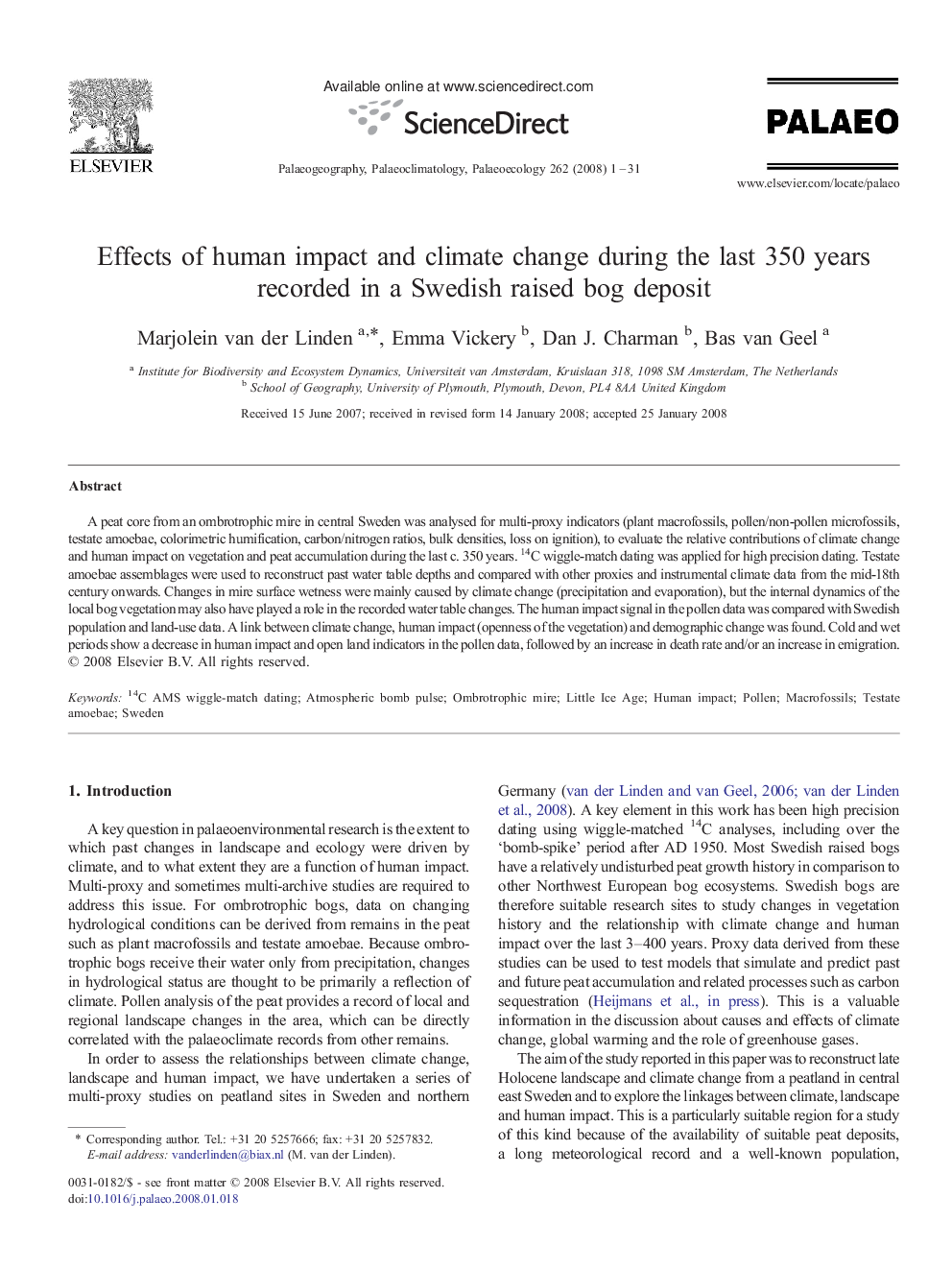| Article ID | Journal | Published Year | Pages | File Type |
|---|---|---|---|---|
| 4468592 | Palaeogeography, Palaeoclimatology, Palaeoecology | 2008 | 31 Pages |
A peat core from an ombrotrophic mire in central Sweden was analysed for multi-proxy indicators (plant macrofossils, pollen/non-pollen microfossils, testate amoebae, colorimetric humification, carbon/nitrogen ratios, bulk densities, loss on ignition), to evaluate the relative contributions of climate change and human impact on vegetation and peat accumulation during the last c. 350 years. 14C wiggle-match dating was applied for high precision dating. Testate amoebae assemblages were used to reconstruct past water table depths and compared with other proxies and instrumental climate data from the mid-18th century onwards. Changes in mire surface wetness were mainly caused by climate change (precipitation and evaporation), but the internal dynamics of the local bog vegetation may also have played a role in the recorded water table changes. The human impact signal in the pollen data was compared with Swedish population and land-use data. A link between climate change, human impact (openness of the vegetation) and demographic change was found. Cold and wet periods show a decrease in human impact and open land indicators in the pollen data, followed by an increase in death rate and/or an increase in emigration.
